Vino Sudafrica
Il vino sudafricano è ormai conosciuto ed apprezzato in tutto il mondo. Bianchi, rossi, spumanti, distillati e vini da dessert sono ottimi. Anche gli intenditori europei ammettono che la produzione vinicola del Sudafrica non ha nulla da invidiare alla nostra.
La coltivazione delle viti venne introdotta
nel 1659 nella zona del Capo e grazie alla sapiente tecnica nella raccolta
e nella fermentazione dell'uva, all'habitat naturale, al clima favorevole
e al suolo ricco di elementi preziosi per le viti, il vino sudafricano
è un prodotto assolutamente squisito. Le diverse qualità
di viti annoverano tra i vini bianchi: Chenin Blanc, Chardonnay, Sauvignon
blanc, Hanepoot (Moscat d'Alexandrie), Rhine, Riesling e Semillon; mentre
tra i vini rossi, particolarmente pregiati sono: Cabernet Sauvignon, Cinsaut,
Pinotage (una varietà esclusiva del Sudafrica), Merlot, Shiraz,
Pinot nero, Ruby, Tinta barocca e Pontat.
 The
establishment by the Dutch East India Company of a refreshment station
at the Cape in 1652 had one single aim: to provide fresh food to the company's
merchant fleet on their voyages to India and surrounding areas. But much
more evolved than that - the establishment of a trading station led to
a flourishing wine industry and later to the birth of a nation.
The
establishment by the Dutch East India Company of a refreshment station
at the Cape in 1652 had one single aim: to provide fresh food to the company's
merchant fleet on their voyages to India and surrounding areas. But much
more evolved than that - the establishment of a trading station led to
a flourishing wine industry and later to the birth of a nation.
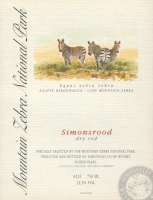 Jan van Riebeeck, the first governor of the Cape, planted a vineyard in
1655, and on 2 February 1659, the first wine was made from Cape grapes.
Van Riebeeck strongly encouraged farmers to plant vineyards although initially
they were most reluctant. There were many setbacks in the beginning, chiefly
because of the farmers' ignorance of viticulture. Things improved when
Van Riebeeck was succeeded in 1679 by Simon van der Stel, who was not
only enthusiastic but very knowledgeable about viticulture and winemaking.
He planted a vineyard on his farm Constantia and made good wine from the
outset.
Jan van Riebeeck, the first governor of the Cape, planted a vineyard in
1655, and on 2 February 1659, the first wine was made from Cape grapes.
Van Riebeeck strongly encouraged farmers to plant vineyards although initially
they were most reluctant. There were many setbacks in the beginning, chiefly
because of the farmers' ignorance of viticulture. Things improved when
Van Riebeeck was succeeded in 1679 by Simon van der Stel, who was not
only enthusiastic but very knowledgeable about viticulture and winemaking.
He planted a vineyard on his farm Constantia and made good wine from the
outset.
By the 19th century, South Africa was producing more wine than it ever
had before. It exported so much wine that the British Lord Nelson called
it an "immense tavern." South African wine was enjoyed around
the world in places such as Britain and the United States.
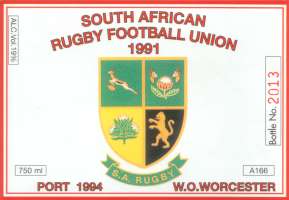 When the British gained control of the Cape, they were delighted to find
a large source of wine at their disposal. After the British abolished
slavery in South Africa the wine industry suffered. Rich planters drove
away all competition through the production of cheap wine.
When the British gained control of the Cape, they were delighted to find
a large source of wine at their disposal. After the British abolished
slavery in South Africa the wine industry suffered. Rich planters drove
away all competition through the production of cheap wine.
During the wine boom of the 20th century, South Africa was virtually ignored
in the world's wine market. This is because of its political situation
and the many trade embargoes against South African industry in general.
Today, the wines of South Africa are very high in quality
but there is still little consumer interest in these wines. This negative
attitude towards South African industry has created many obstacles for
the promotion of her wines. Not all nations ignore South African industry,
however, and this recognition should help this industry to expand in the
future.
WINE
While other countries were planting Chardonnay and Cabernet Sauvignon,
South Africa persisted with the still often uncommercial Pinotage and
Chenin Blanc.
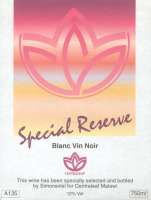 On
Pinotage is grape grown almost exclusively in South Africa. And in one
small part of that country - the Cape
On
Pinotage is grape grown almost exclusively in South Africa. And in one
small part of that country - the Cape
The cape, at the very tip of the African continent with the Indian ocean
on one side and the Atlantic on the other, is an land of long unspoiled
beaches backed by craggy mountains. In the short distance between the
two and in fertile valleys are the cape wine lands. The area under wine
cultivation is quite small, easy to travel around and heart breakingly
picturesque. the other, is an land of long unspoiled beaches s. n Pinotage
is the result of a cross between the Pinot Noir and Cinsault (of the Rhône)
varieties.
The Dutch, and later the English, colonised the southern tip of Africa
because it commanded the sea route to the East. Early in the Dutch period,
the Governor of the tiny province caused vines to be planted. The Cape
of Good Hope was far from anywhere, and it had to be self-sufficient in
wine as in much else. Also, wine was needed by ships replenishing on the
year-long voyage from Holland to the East Indies. The first Cape wine
was made in 1659, making South Africa one of the oldest of the New World
vineyards.
Religious wars in France drove Protestants - the Huguenots - to settle
abroad. Some came to the Cape, where the valley of Franschoek (‘French
corner’) was among their early settlements.
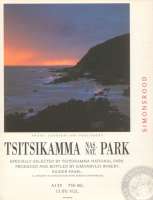 In 1652 Jan Van Riebeeck established the first settlement in the Cape
and in the same year planted the first vines. Some time later, Simon van
der Stel, founder of Stellenbosch, planted vines at Constantia.
In 1652 Jan Van Riebeeck established the first settlement in the Cape
and in the same year planted the first vines. Some time later, Simon van
der Stel, founder of Stellenbosch, planted vines at Constantia.
The Cape has suffered badly from the lack of suitable plant material.
Much of the vine stock in use during the 1962s and 1970s was not virus-free,
and consequently the growers had difficulty ripening the grapes, even
in some of the warmer areas.
New virus-free stock is now rapidly coming into production, and one can
expect to see substantial differences in the near future. Today South
Africa accounts for just over two per cent of total world wine production.
The so-called “winelands” are broken
down into regions and districts. To complicate matters for outsiders,
while most wineries are adopting the English language on their labels,
the terms are often still in Afrikaans.
Wyn van Oorsprong indicates “Wine
of (regional) Origin” which, as elsewhere outside Europe, means
that at least 75 percent comes from the region named. Landgoedwyn (“estate”)
wines must be 100 percent from the estate whose name appears on the label.
Unlike most other countries, even some of South Africa’s best estate
wines are still bottled by merchants (gebottel op) rather than the producer.
Their wines will be labelled Gekweek en Gemaak op (grown and made by).
A wine whose label states Gekweek, Gemaak en Gebottel op will have been
grown, made and bottled by its producer.
Other wines will be labelled Semi-Soet (semi-sweet), Laat-Oes (late harvest)
Spesiale Laat-Oes (special late harvest or Edel Laat-Oes (noble late harvest).
The grapes aren’t picked at the same time in the northern and southern
hemisphere : so a 2001 South African wine is six months older than a 2001
from California.
A brief history of South African Wines
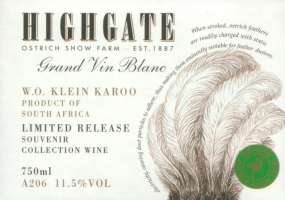 It
was as early as 1652 when South Africa was deemed a suitable place to
grow grapes for wine making. Vine cuttings were taken from parts of Europe
but mainly from France. The first vineyard planting for South African
Wines was in 1655 with the proclamation, "Today, praise be to God,
wine was pressed from Cape grapes for the first time." The South
African Wine industry in the 1800’s began to really improve. Due
to the Napoleonic wars the French wine trade ceased and wine lovers looked
to the Cape for a variety of South African Wines.
It
was as early as 1652 when South Africa was deemed a suitable place to
grow grapes for wine making. Vine cuttings were taken from parts of Europe
but mainly from France. The first vineyard planting for South African
Wines was in 1655 with the proclamation, "Today, praise be to God,
wine was pressed from Cape grapes for the first time." The South
African Wine industry in the 1800’s began to really improve. Due
to the Napoleonic wars the French wine trade ceased and wine lovers looked
to the Cape for a variety of South African Wines.
 In
the early 1900’s the South African Wine industry had considerable
over-production due to wars and the general hardship of the economy. Accordingly
a co-operative was formed to stop farmers competing amongst themselves.
This co-ordinated activity allowed the sharing of machinery and technical
knowledge. Whilst this system had many advantages it did not deal satisfactorily
with the problem of over production. In an attempt to counter this problem
the Ko-operatieve Wijnbouwers Vereniging van Zuid Afrika Beperkt (KWV)
was formed in 1918 to oversee the wine industry.
In
the early 1900’s the South African Wine industry had considerable
over-production due to wars and the general hardship of the economy. Accordingly
a co-operative was formed to stop farmers competing amongst themselves.
This co-ordinated activity allowed the sharing of machinery and technical
knowledge. Whilst this system had many advantages it did not deal satisfactorily
with the problem of over production. In an attempt to counter this problem
the Ko-operatieve Wijnbouwers Vereniging van Zuid Afrika Beperkt (KWV)
was formed in 1918 to oversee the wine industry.
In 1956 a quota system was introduced which effectively limited the number
of vines a farmer could grow. The result was that the KWV could control
the size of the crop and the location of the grapes.
There has been a steady increasing investment into the South African wine market that has enabled the betterment of wine growing and production. South African Wines are now widely exported throughout the world. It is claimed that variety, taste and overall quality of South African Wines makes them very unique.
© All rights reserved. The Wine Labels World.